Fall-planted bulbs have the special power to let us plant and forget, and November is the perfect time to get the easy-growers in the ground. Come spring, they’ll pop up with surprise and delight. For early joy, turn to the first bulbs to flower. These lengthen the season and bring unique floral forms and hues.
The first bloomers are often small bulbs or dwarf growers, hardy stock with diminutive forms. These experience their necessary cooling period and burst forth as temperatures warm and daylengths expand, sometimes even through snowy ground.
Durable, reliable, and often perennial, these little bulbs are also easy to plant in numbers. Their color is especially welcome when we need it most, warming up chilly days in a joyful fashion. Scatter them among other spring-flowering bulbs for a twinkling show of complementary shades.
Remembrance Crocus Bulbs
With Remembrance Crocus, your garden becomes a symbol of renewal. Plant in autumn, and watch as these cheery blossoms break through the cold, bringing with them the promise of warmer days ahead.
Glory of the Snow ‘Blue Giant’
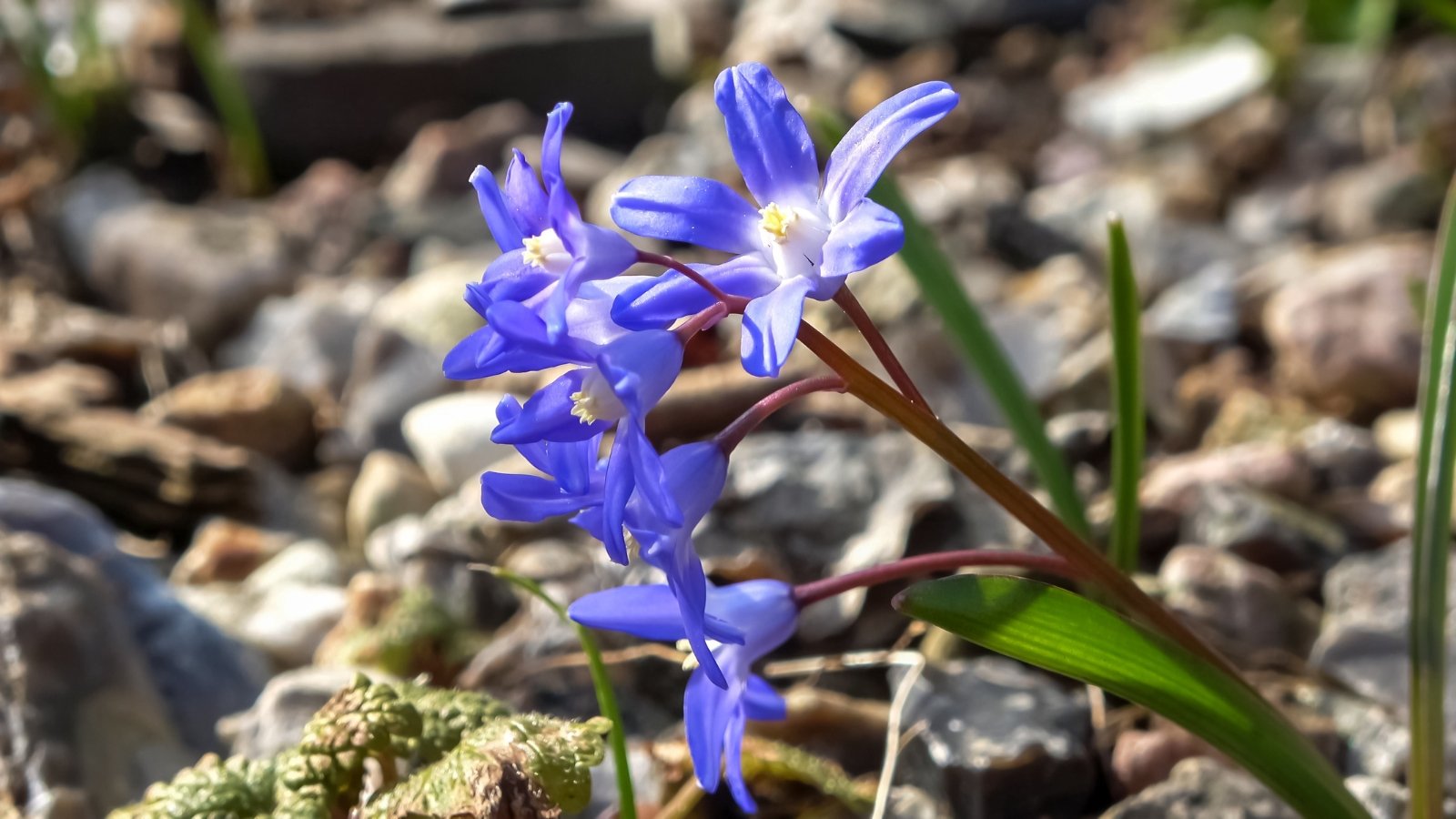
Glory of the snow sends up fresh green shoots in late winter, even popping up through the snow. C. luciliae is a large-flowered species with multiple buds and stems per bulb. Early-blooming ‘Blue Giant’ produces starry, six-petaled, periwinkle blooms. Flowers are upfacing with bright white centers surrounded by lavender-blue petals.
By late spring and early summer, foliage fades as plants enter dormancy. While not aggressive, glory of the snow naturalizes readily through spreading roots, and it self-seeds. It makes a graceful ground cover, rock garden, or woodland spray of color.
Plant bulbs in November, placing them close together at two to three inches apart and three inches deep. Soil needs to be well-drained, with moisture during the growing season. Glory of the Snow tolerates dry periods during its dormancy.
Winter Aconite
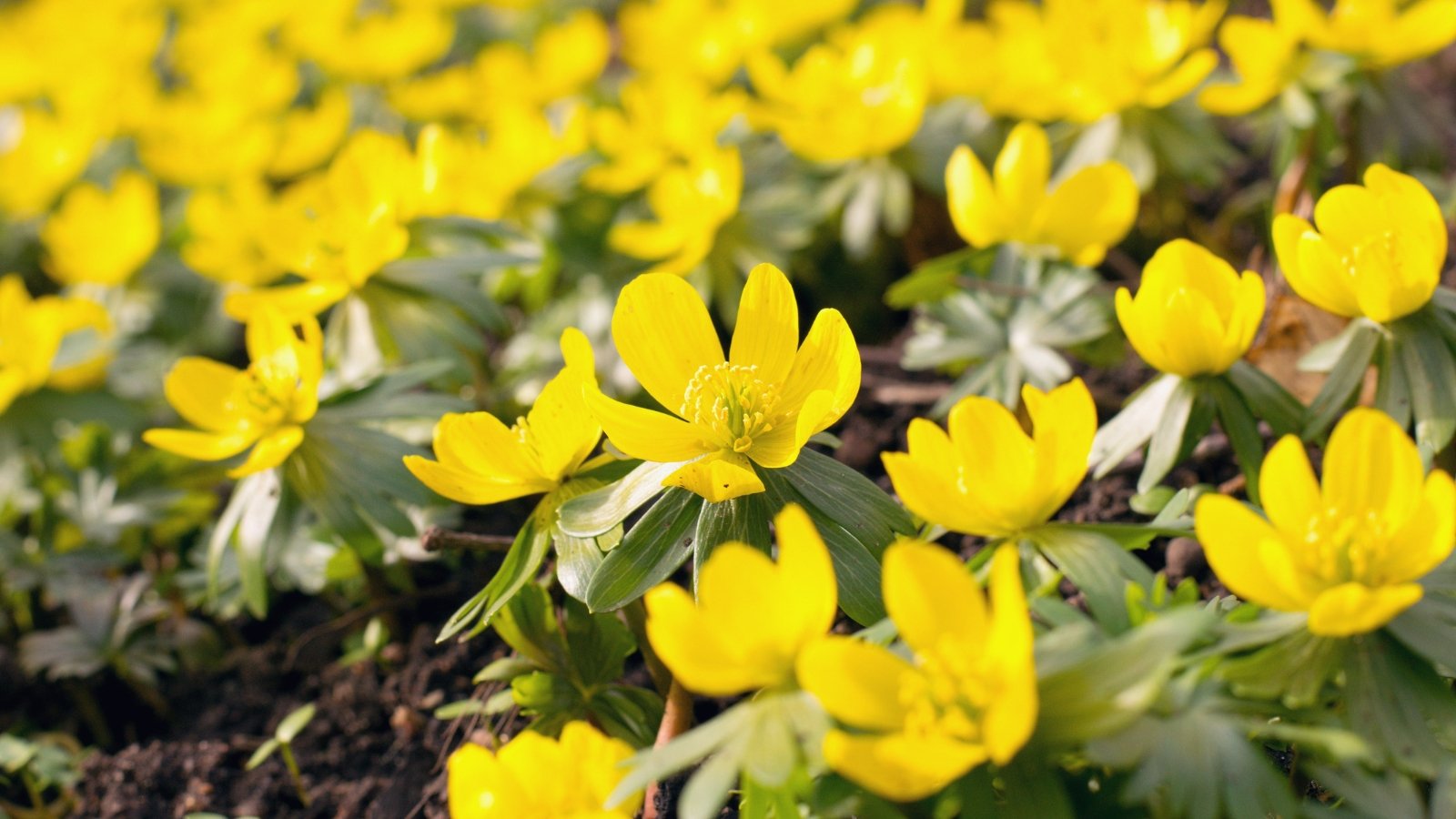
Winter aconite has bright yellow, cupped flowers that face upward and look like buttercups on petite stems. Leaves shoot up among late snow and yield a profusion of pin-cushion blooms.
Because of its petite stature, winter aconite makes the most significant impact when planted closely. Soak tubers overnight before planting in November. Winter aconite is dormant in the warm season but still requires some moisture during dormancy.
Snowdrop ‘Atkinsii’
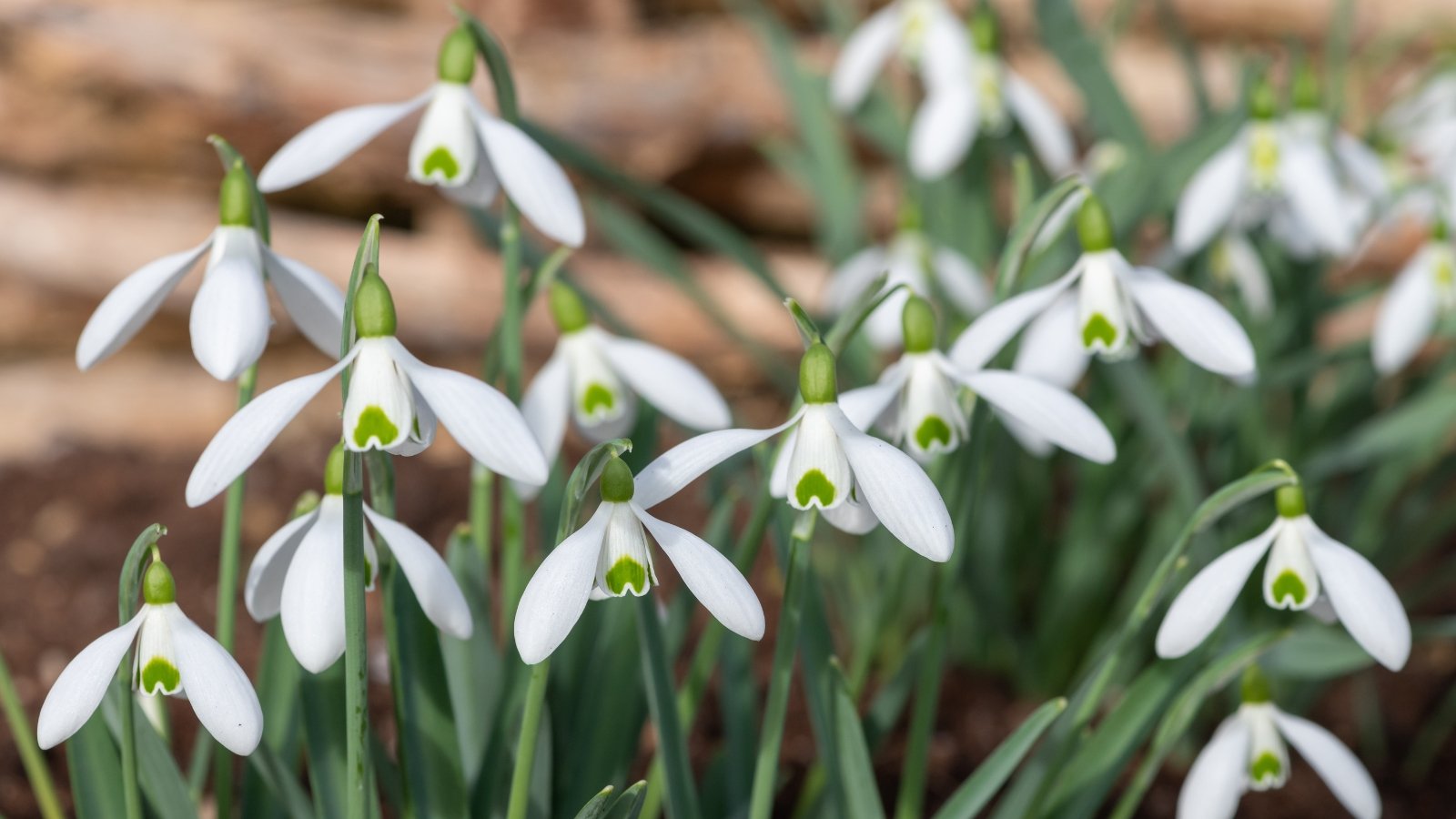
To complement glory of the snow and winter aconite, snowdrops show delicate white bells with a light, fresh perfume. Green stems poke up through frosty ground with blooms as soon as January.
‘Atkinsii’ is an especially early variety whose crisp petals have a distinct green heart marked on their tips. Slender, pear-shaped outer petals frame the inner three. The delicate beauty is a recipient of the Award of Garden Merit.
Plant snowdrops in the fall at two to three inches apart and four inches deep. They’re carefree in woodland and naturalized settings and are lovely in the border, rock gardens, and along walkways. Snowdrops spread and divide easily when groups become crowded.
Crocus ‘Remembrance’
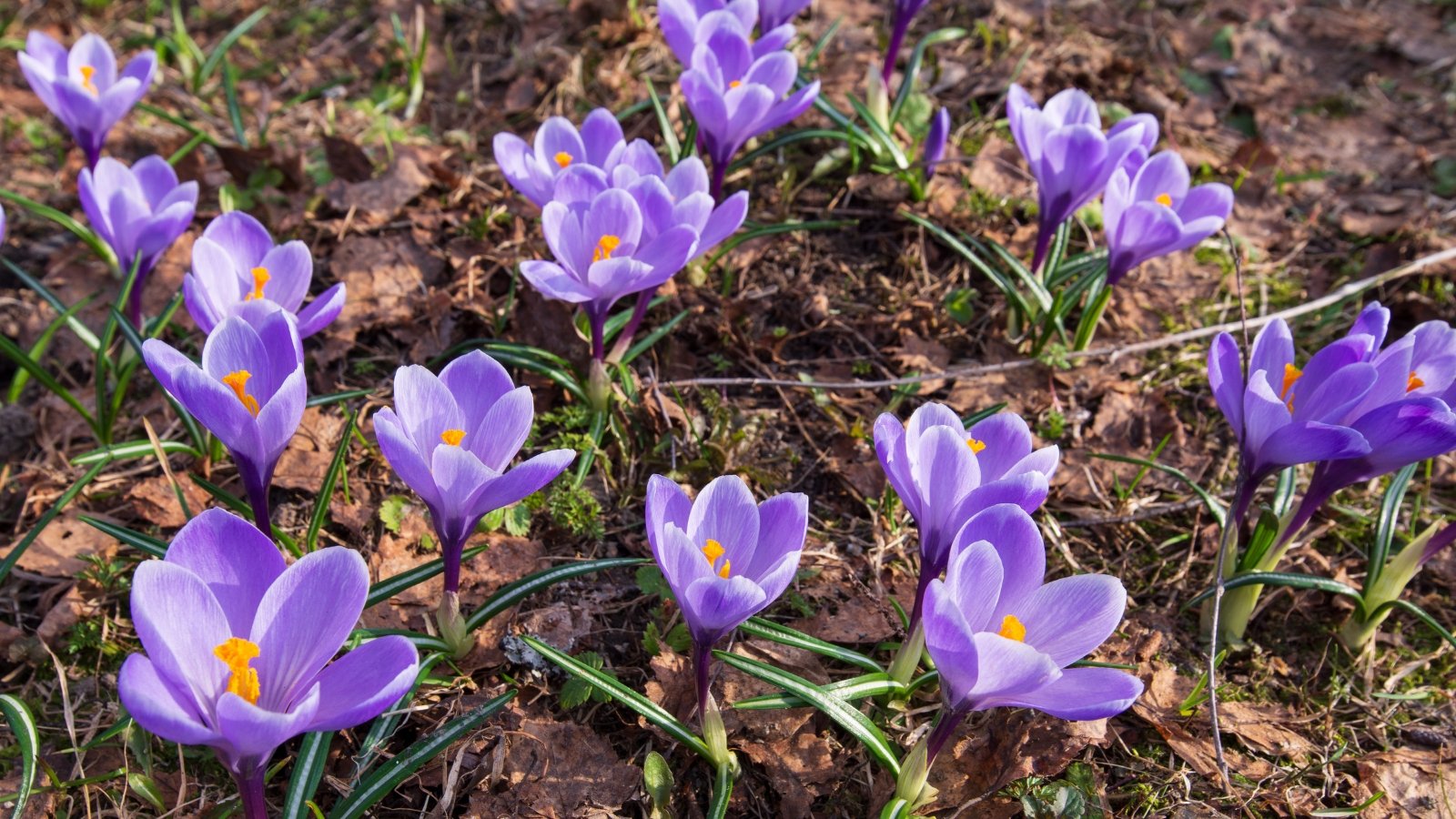
Like others that are fast to flower, crocus produces soft cupped blossoms that last for a few weeks. Fine-bladed foliage goes dormant as temperatures warm, but crocus naturalizes well for a colony of recurrent color.
‘Remembrance’ brings vibrance in silvery purple shades with golden centers. The 100-year-old heirloom is a large-flowered selection with showy blossoms on little stems.
‘Remembrance’ is a good source of pollen and nectar for pollinators at a time when other resources have yet to emerge.
Grape Hyacinth
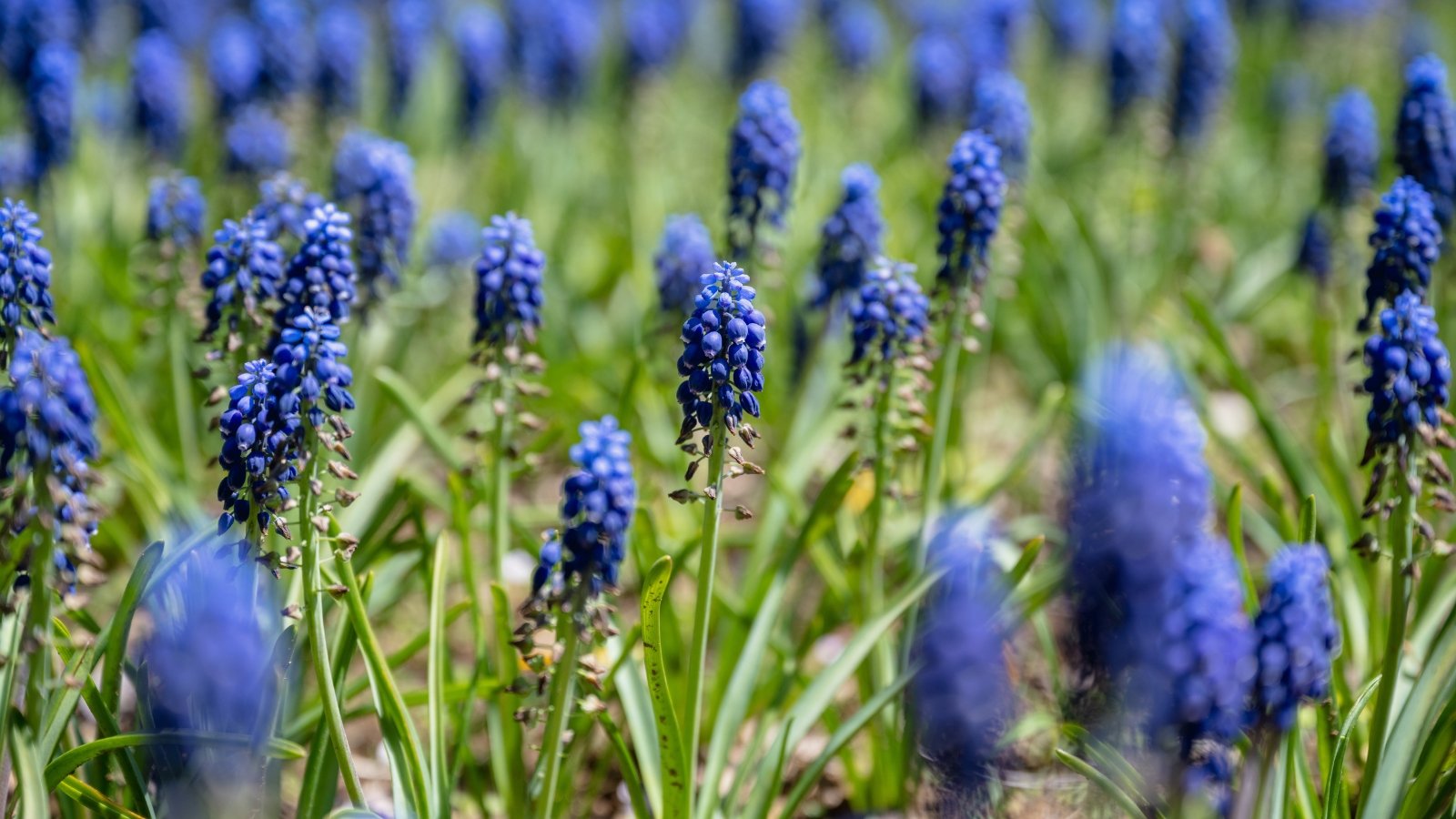
Grape hyacinth bears tidy clusters of cobalt bells along compact stems. Cultivars in purple, pink, and white bring low-growing color to the front of the border or container arrangement.
Deep green, bladed leaves emerge before the blooms and may reemerge in fall. Grape hyacinth spreads in optimal conditions, both by roots and seeds. Divide them to keep them in bounds. Versatile across planting combinations and growing conditions, Muscari armeniacum earned the Royal Horticultural Society Award of Garden Merit.
Daffodil ‘Tete-a-Tete’
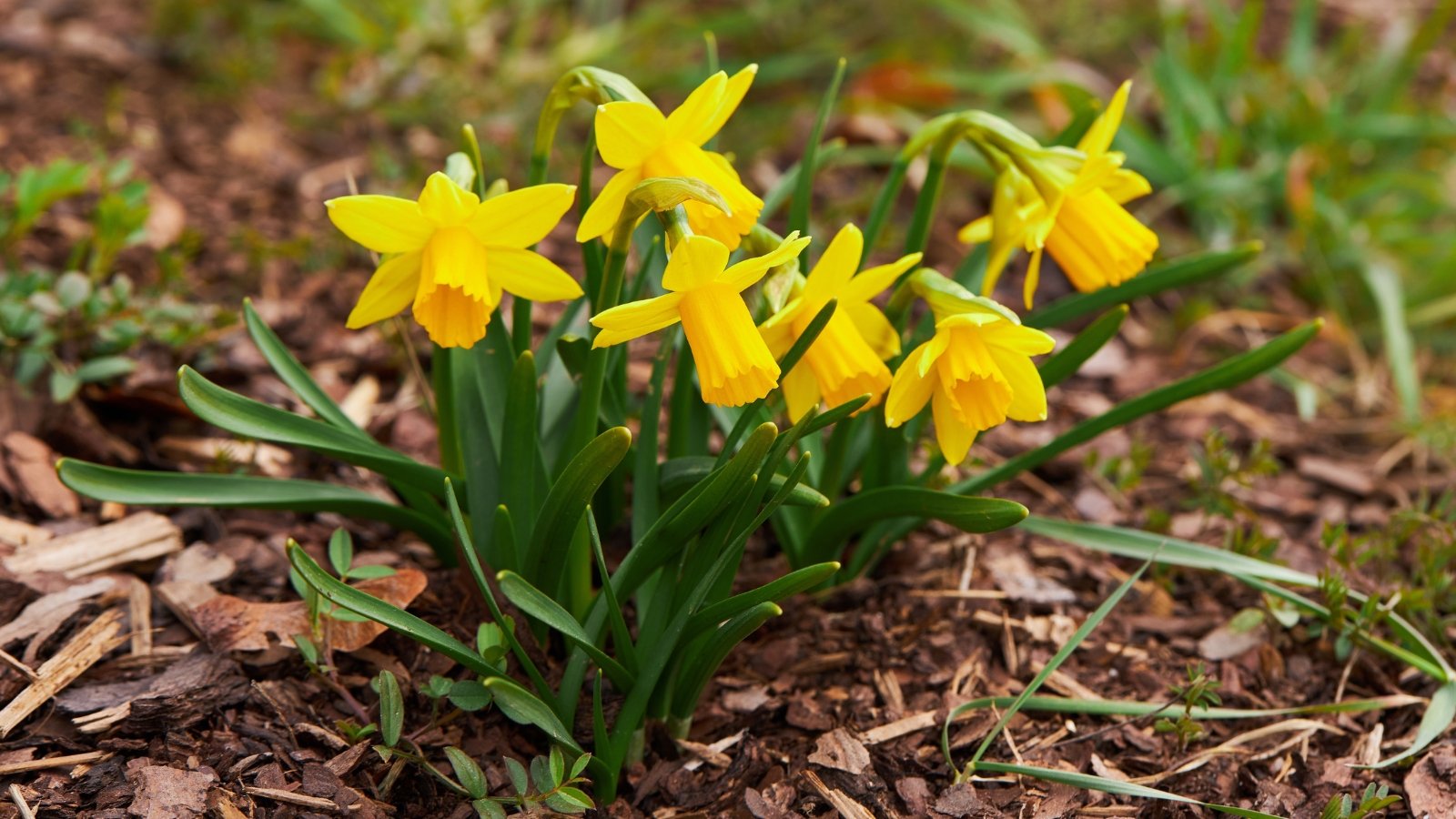
Daffodils herald spring with trumpet blooms and crisp petals in yellow, white, and peachy pinks. With early, mid, and late-season varieties, it’s possible to have an extended show that begins as early as February.
‘Tete-a-tete’ is an early-season daffodil with buttery yellow cups and multiple blooms per stem. It’s one of the first to flower with numerous buds. The RHS Award of Garden Merit winner is a sturdy, floriferous dwarf variety.
Other early risers include the bright yellow ‘Rijnvelds Early Sensation’ that even blooms in January and, soon thereafter, ‘February Gold.’
Daffodils are iconic en masse. Cluster them in groupings or drifts for a brilliant display. You can also “force” them (and other spring-flowering bulbs) indoors to have them bloom earlier than they would in the winter landscape. Plant them in November in indoor arrangements for a joyful holiday display or gift.
Let daffodil leaves persist after blooming until they turn yellow and die back with warmer weather. Leaving them intact allows energy absorption and storage for the next growing season.
Paperwhite ‘Inbal’
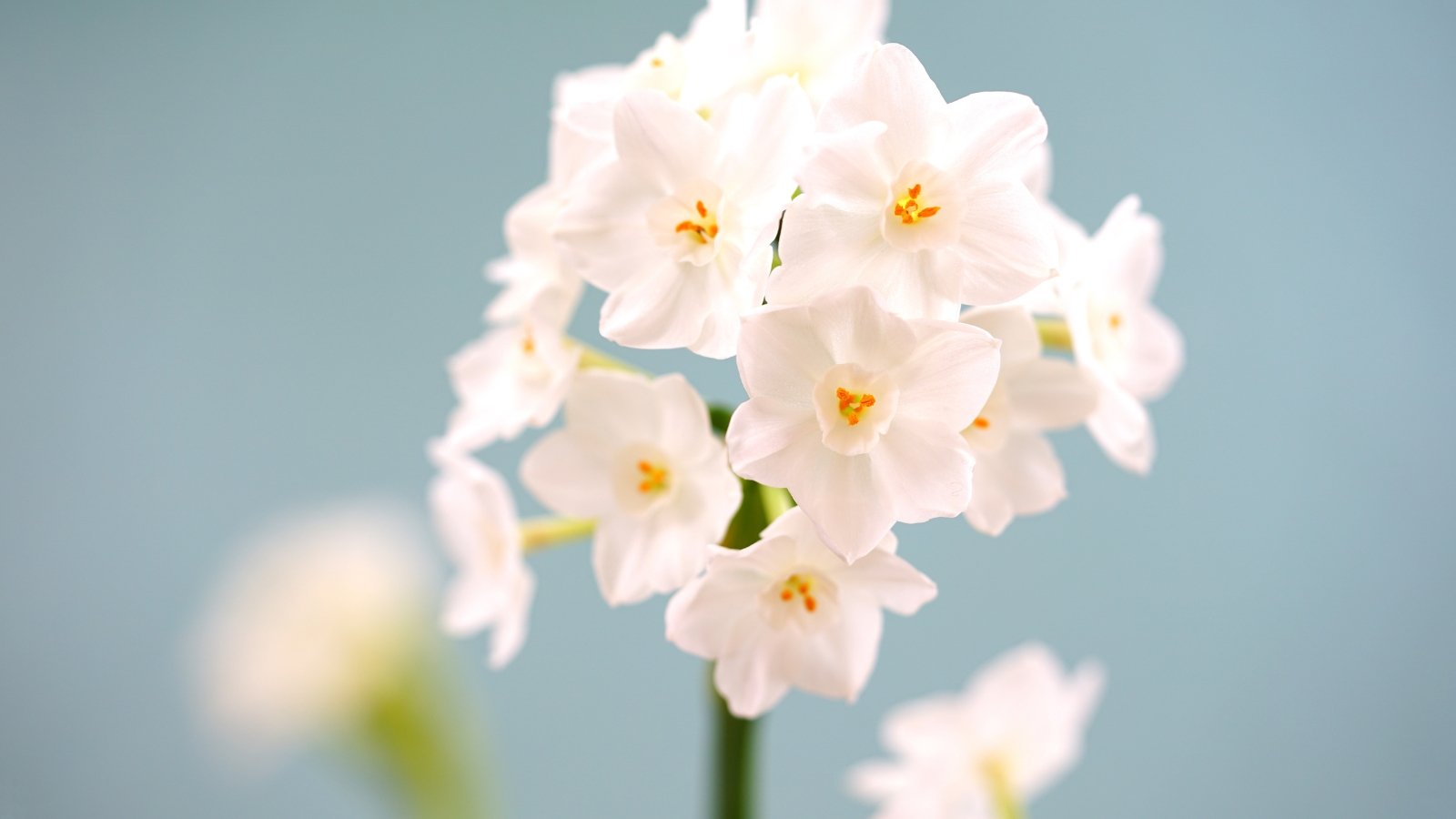
Paperwhites bring a bouquet of cheer, especially those with a light, sweet fragrance like ‘Inbal,’ ‘Ariel,’ and ‘Nir.’ Other varieties can have acrid notes and may be less pleasing up close, though just as beautiful in the landscape. ‘Inbal’ is crisp white with flattened cups and a small, bright yellow center.
Paperwhites are small bulbs that make the most significant impact when planted in numbers. They handle crowding well and are quick-flowering. The small bulbs bloom within four to six weeks of planting and perennialize in warmer zones. They force easily indoors where they mature as quickly as two to three weeks after planting.
Tulip turkestanica
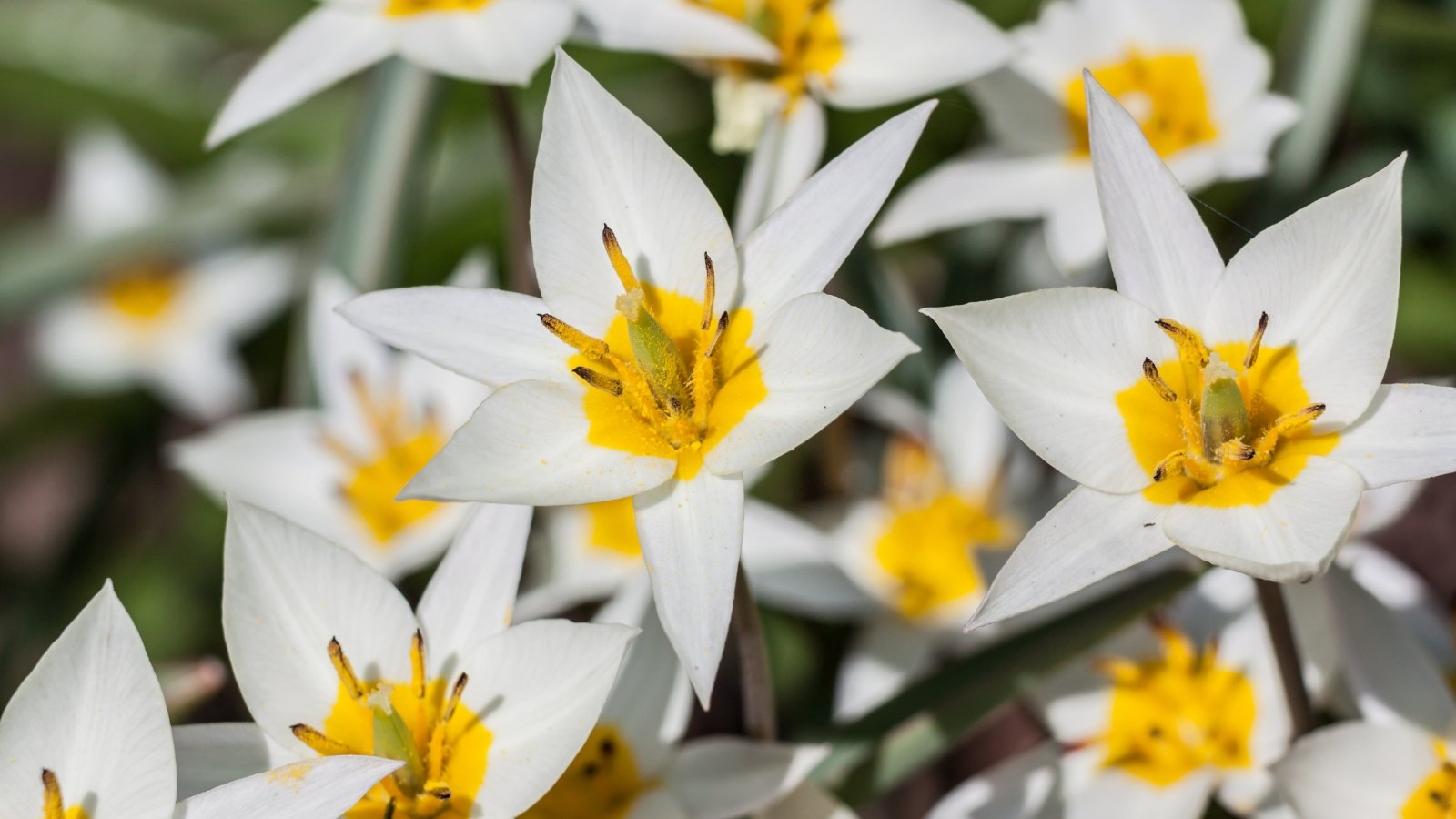
While tulips don’t usually emerge as early as the small flowering bulbs on our list, T. turkestanica is one of the first to show among the genus.
The Award of Garden Merit recipient has a wildflower appeal with delicate, open, starry blooms. Pointed greenish-white petals have dusky violet brushes and golden yellow centers that attract pollinators as an early food source.
Species tulips naturalize well in their optimal environments and are long-lived. The Turkistan tulip is an heirloom from 1875 and a garden favorite, perfect for planting in November for years of tulip enjoyment.
Daffodil ‘Little Gem’
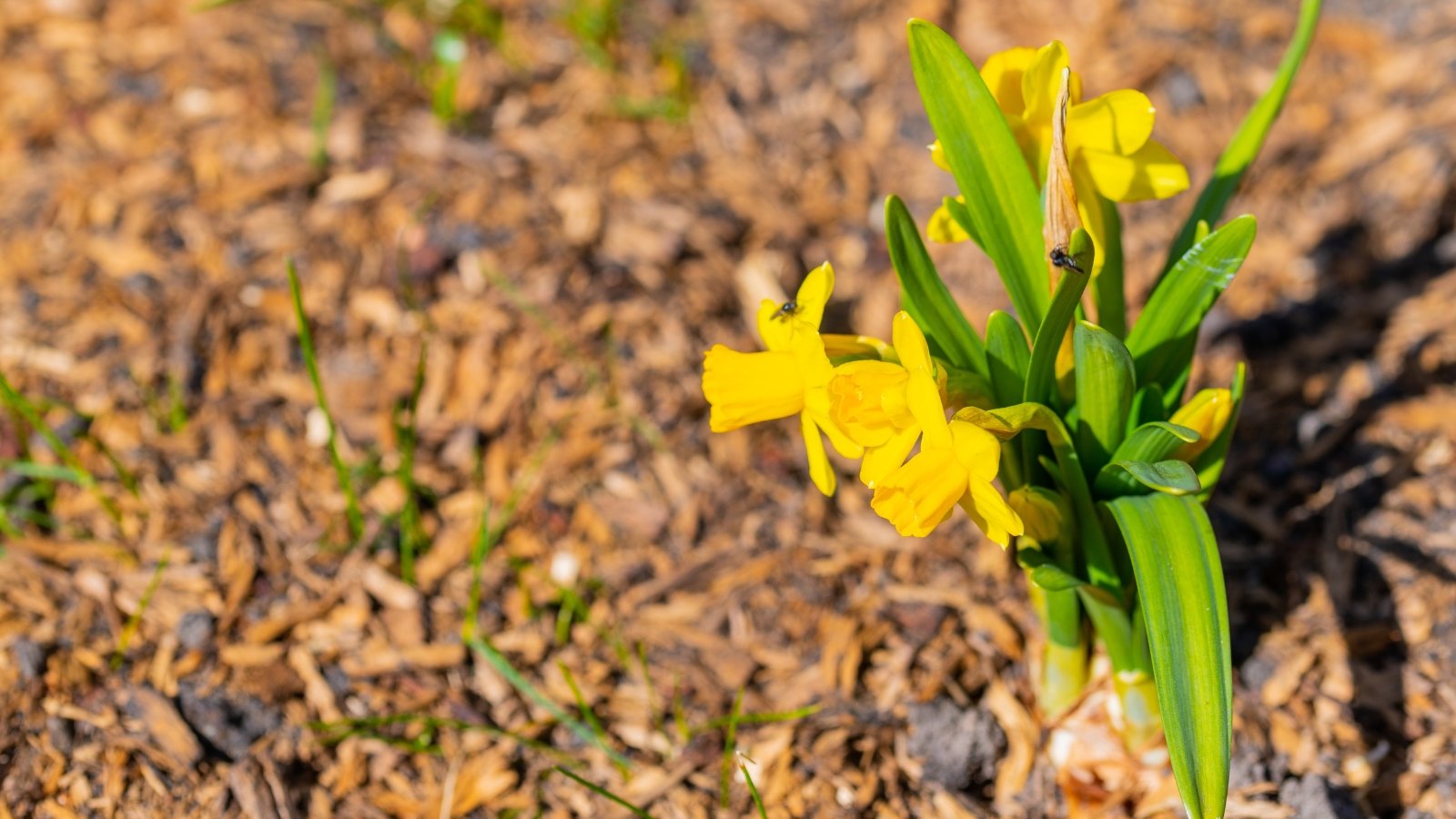
‘Little Gem’ is a historic, miniature daffodil (pre-1938) with a diminutive form with an early show of trumpet flowers. In sunny yellow, petals overlap, and a prominent corona (central trumpet) has a darker yellow rim.
‘Little Gem’ forces easily in pots. It is an excellent specimen for rock garden crevices, near walkways, and in pockets where you’ll see the petite bloomers.
Giant Snowdrops
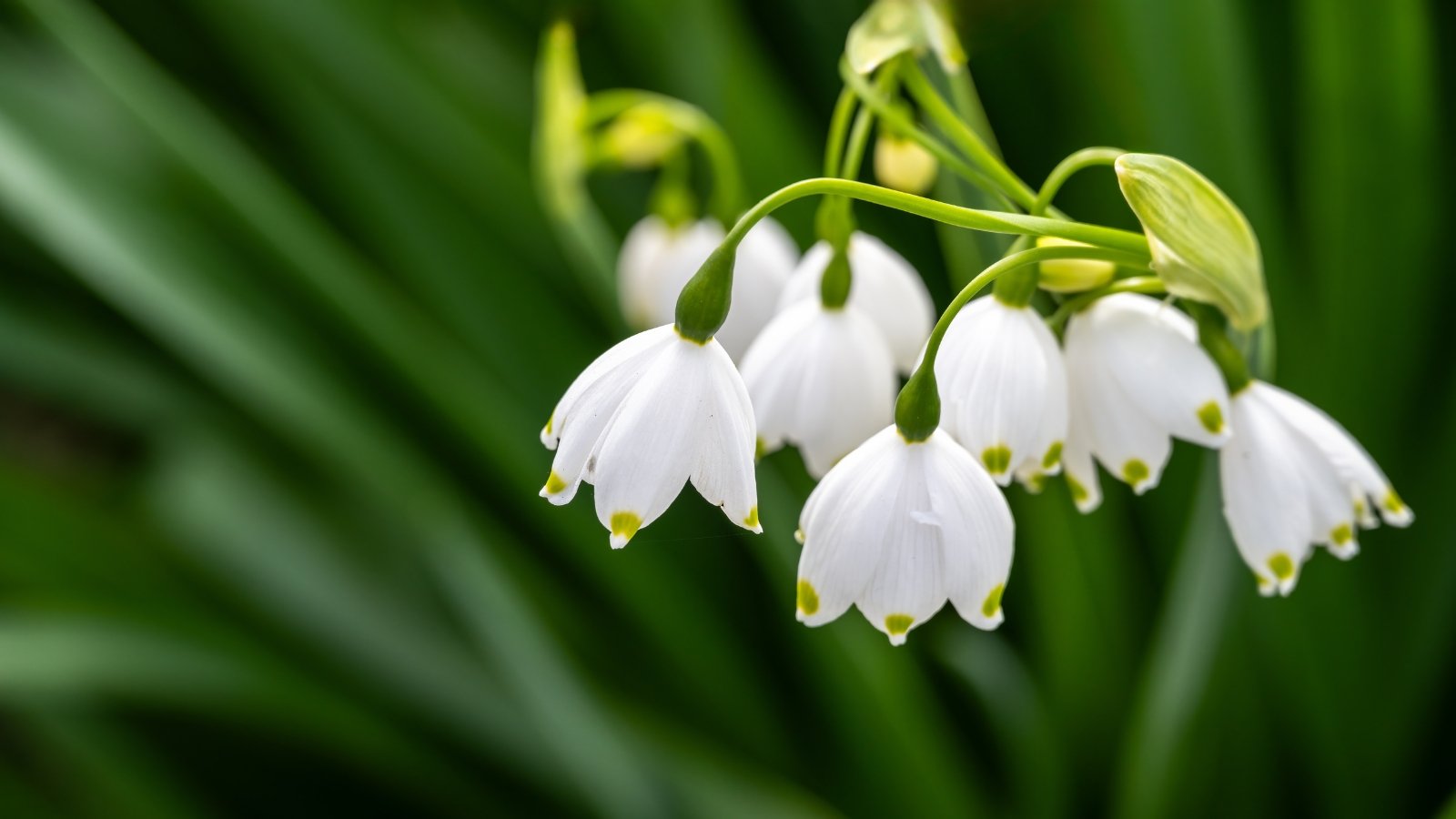
G. elwesii, or giant snowdrops, are a showy selection with larger leaves and flowers. Their pendulous blooms reach up to two inches, and the white petals have a more prominent mossy green blotch.
The “giants” are taller than others in the genus. They also show some success in warmer winter climates, up to zone 9, though they may be shorter-lived. Plant the bulbs in November to allow sufficient cooling time for flowering.
Hardy Cyclamen

Cyclamen, with mottled, heart-shaped leaves, offer a sweet choice for winter. Hardy cyclamen are perennials that provide a profusion of upright blooms, rising in a bunch above deep green leaves.
C. coum blooms mid-to-late winter with a profusion of pink-purple flowers. The leaves have silver mottling and sometimes rosy hues on their stems and undersides. The rhizomatous growers create a gentle woodland ground cover that shines in chilly temperatures and rests during warm seasons.
Hardy cyclamen pair best with late-winter selections like hellebore, winter aconite, glory of the snow, and snowdrops. C. coum boasts Award of Garden Merit honors.
Tulip ‘Early Harvest’
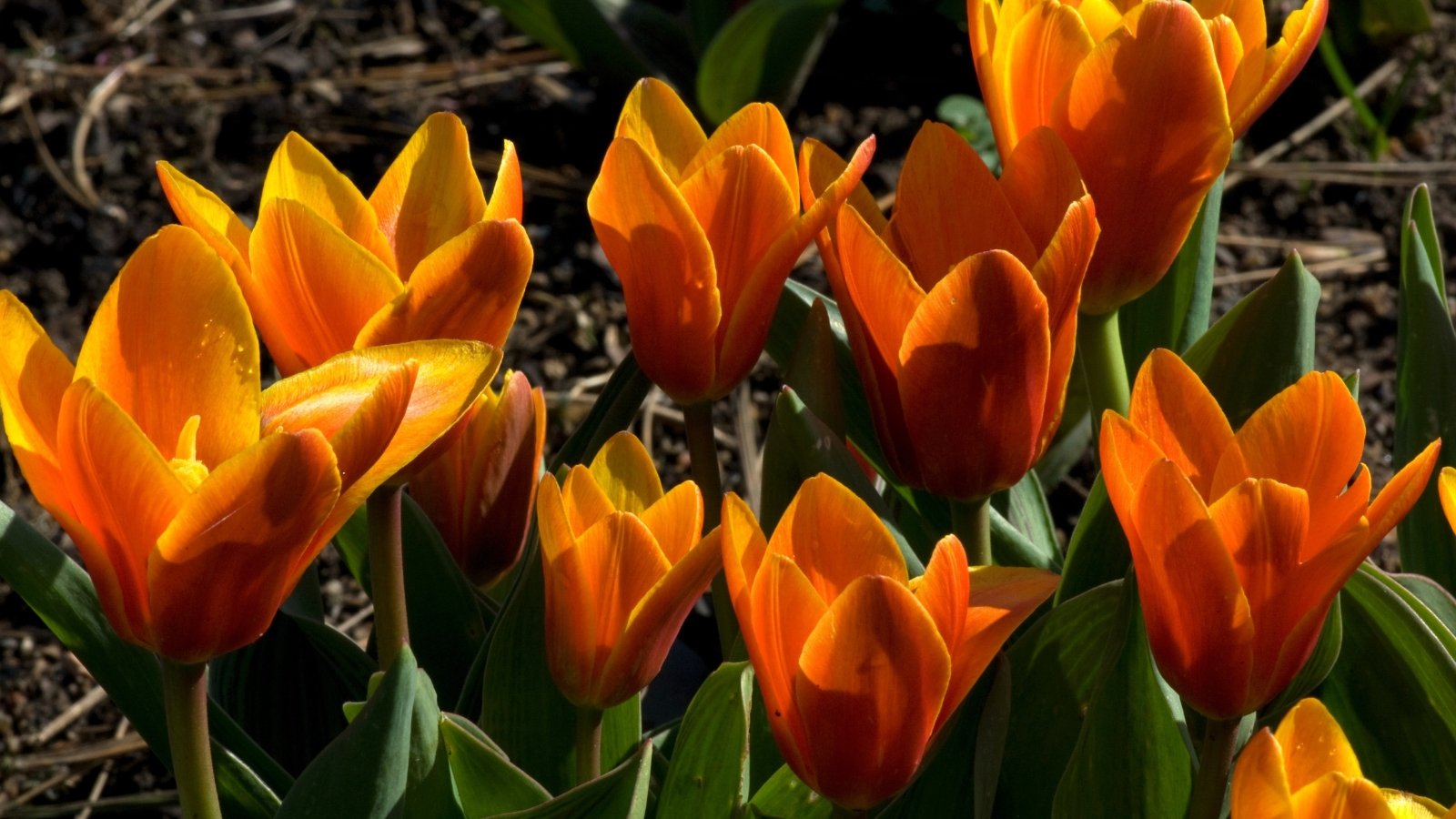
‘Early Harvest’ matches its name in flowering period and color. Deep apricot-orange petals have a lighter gold edge for a glowing appeal. Cups open by day with starry pointed petals.
The Royal Horticultural Society award winner is a Kaufmanniana tulip. Kaufmanniana (water lily tulips) feature large blooms on short stems. Flowers are cupped, trumpeted, and slightly open with long stamens and a yellow eye. Petals and foliage may have streaked patterns. ‘Early Harvest’ has gray-green leaves with purple streaks.
Dwarf Iris ‘Katharine Hodgkin’
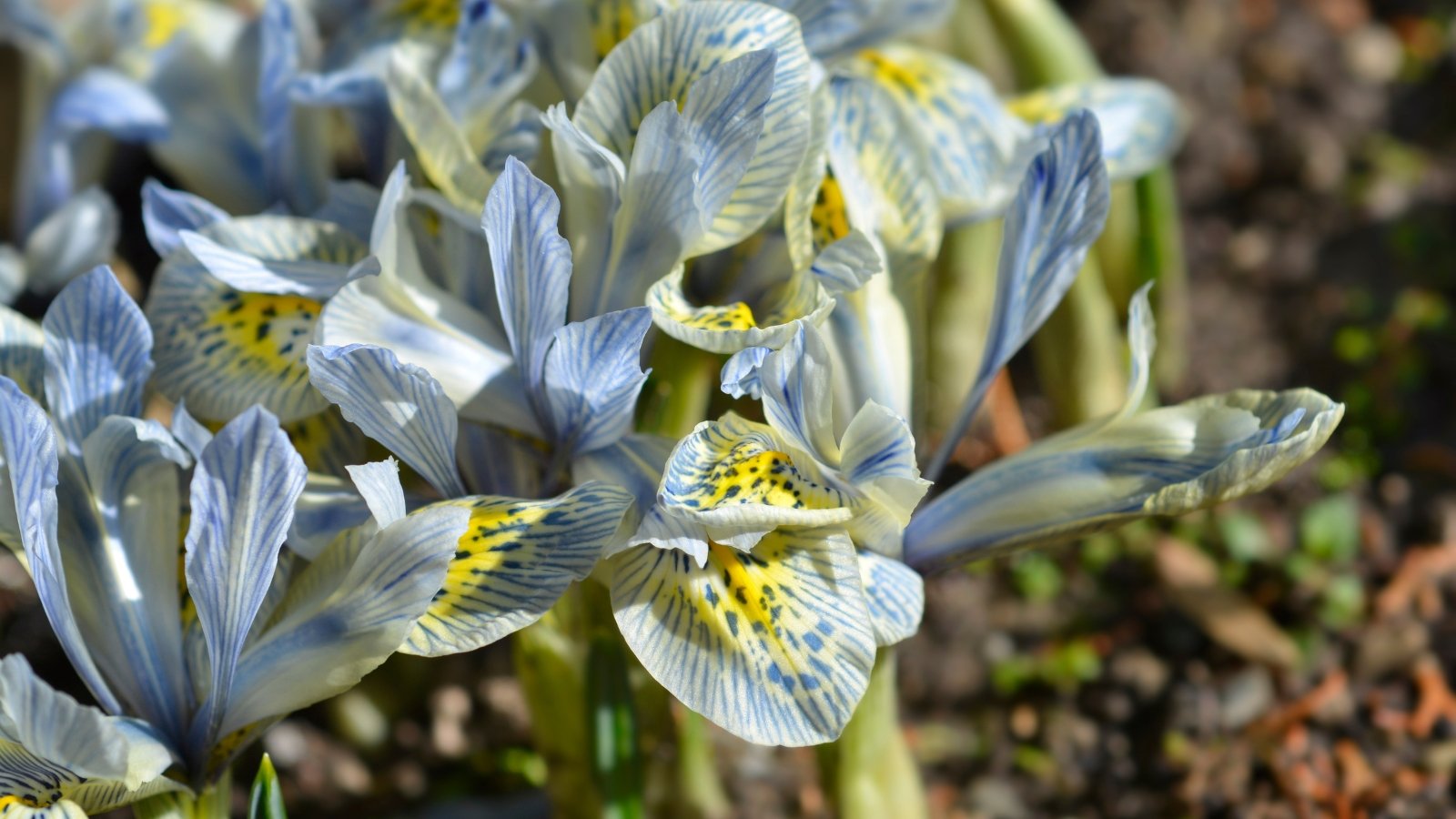
Iris reticulata, native to Iran and Turkey, is a dwarf species with miniature iris flowers on short stalks. ‘Katherine Hodgkin’ has pale blue flowers with indigo brush strokes. Yellow-gold and creamy white line the interior of the falls (lower petals) in a rich contrast.
‘Katherine Hodgkin’ is a hybrid that appears before others in the reticulata species. Its also more vigorous, with award-winning beauty and performance reflective of its Award of Garden Merit status.
Each bulb produces one to two flowers per stem. In addition to the stunning petals is a sweet fragrance to enjoy up-close.
Hellebore ‘Double Fantasy’
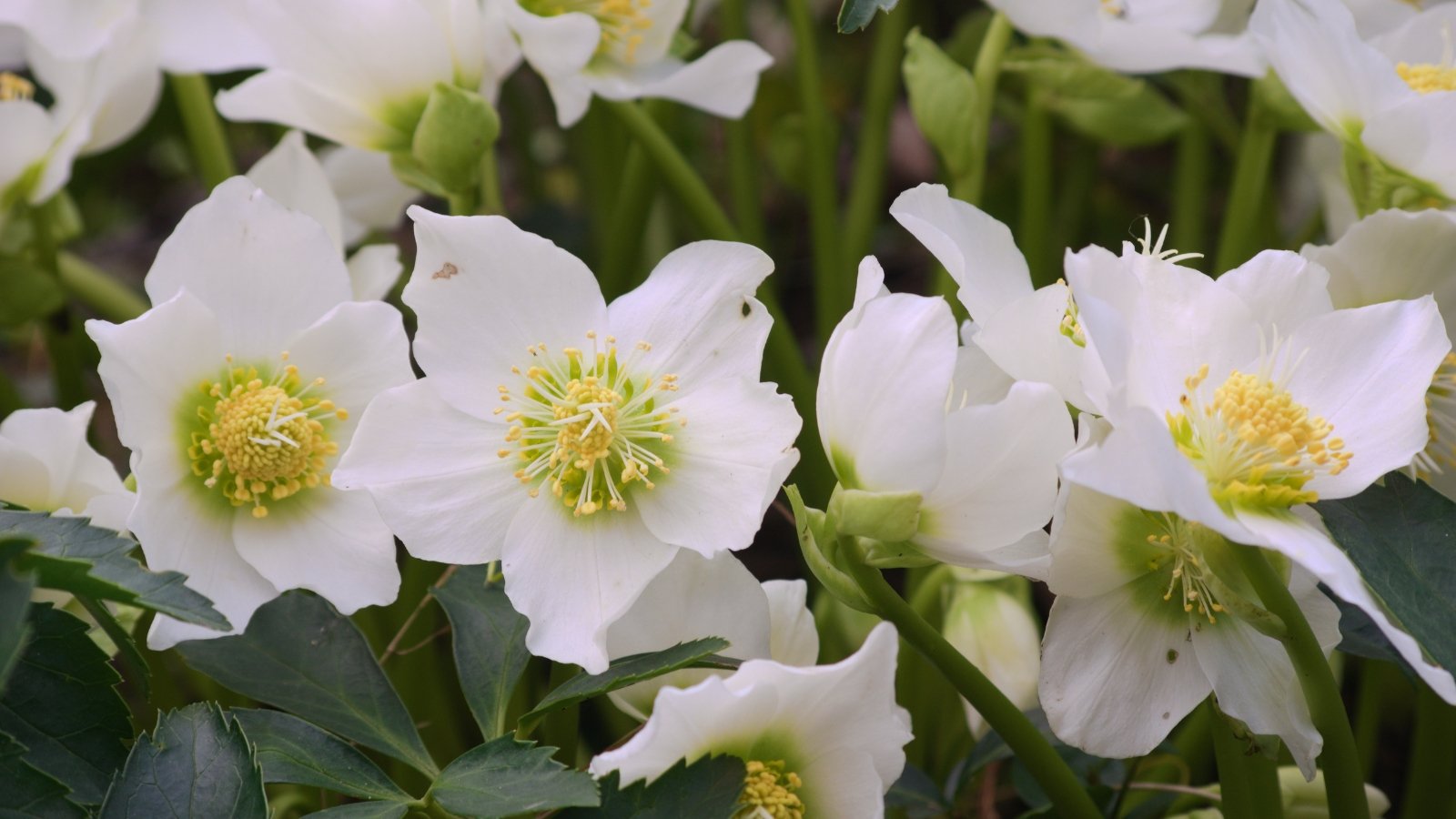
This Christmas hellebore emerges before the H. orientalis species, blooming around the holidays in warmer areas and late winter/early spring in cooler climates. Large bowls of white nodding blooms have yellow stamens.
‘Double Fantasy’ is unique with out-facing semi-double blooms. Gold stamens dot sweet layers of white, ruffly petals. Foliage is semi-evergreen and persists year-round in warmer regions.
Dark green palmate leaves are handsome as a woodland groundcover. They colonize slowly in consistently moist, average soil and dappled light.
Striped Squill
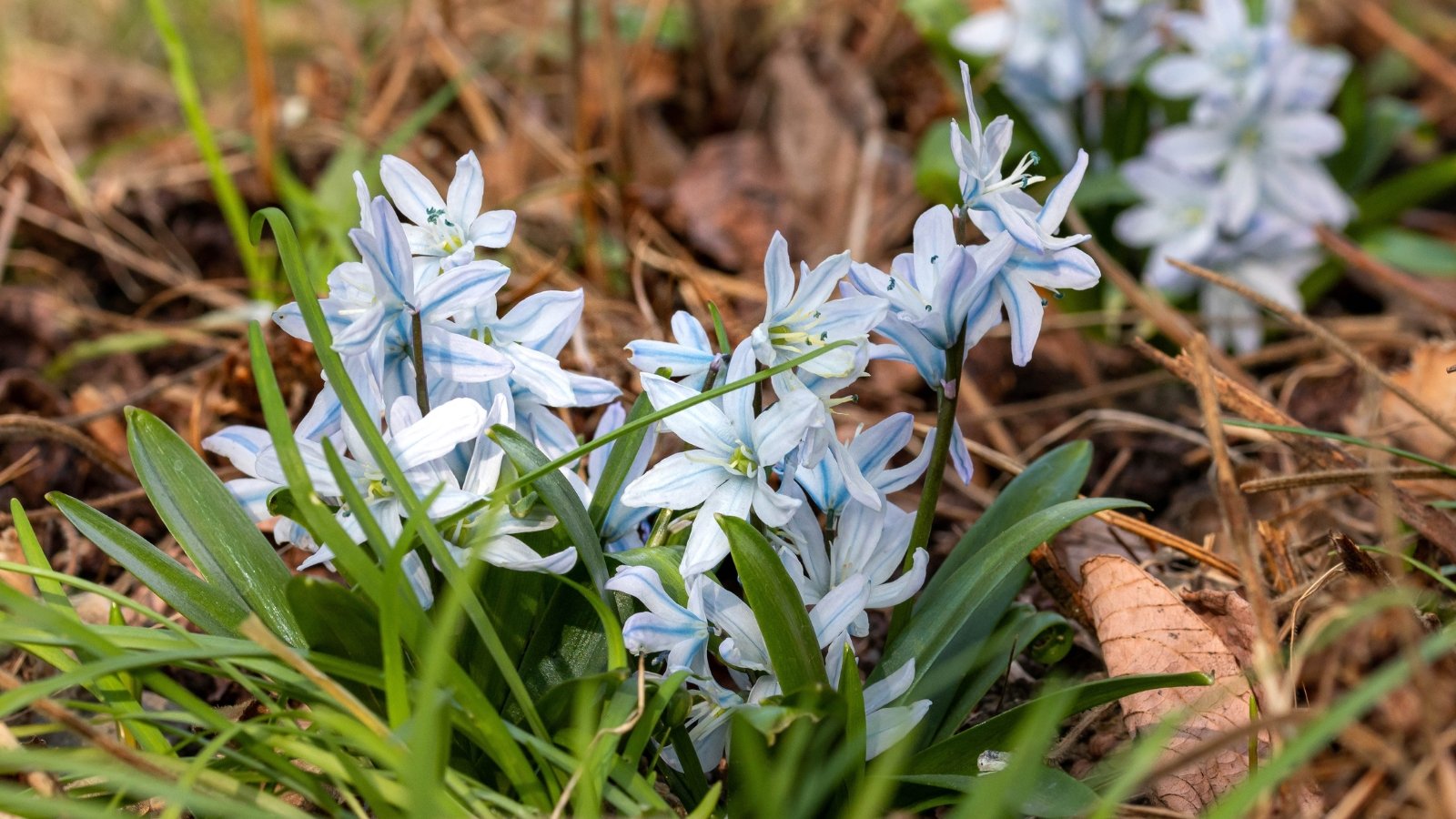
Striped squill produces stems that hold soft, star-shaped flowers in pale blue. Each light petal has a deeper blue central stripe.
The pastel shades complement other spring bulbs like early daffodils and the gold of winter aconite. Each bulb produces two strappy green leaves, which, like daffodils and others, benefit from leaving in place until they naturally die back in dormancy.
Puschkinia resembles Siberian squill and other scillia species, also lovely early selections. Siberian squill has invasive qualities in some areas with its easy spreading and ability to escape the garden bed.



